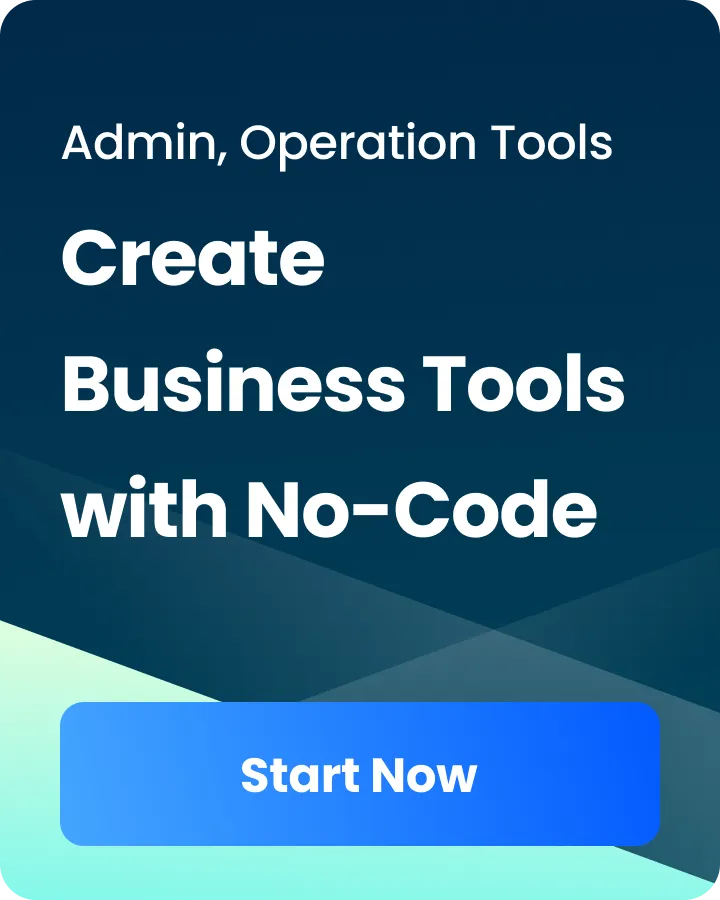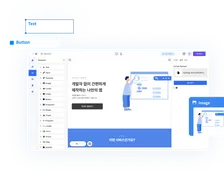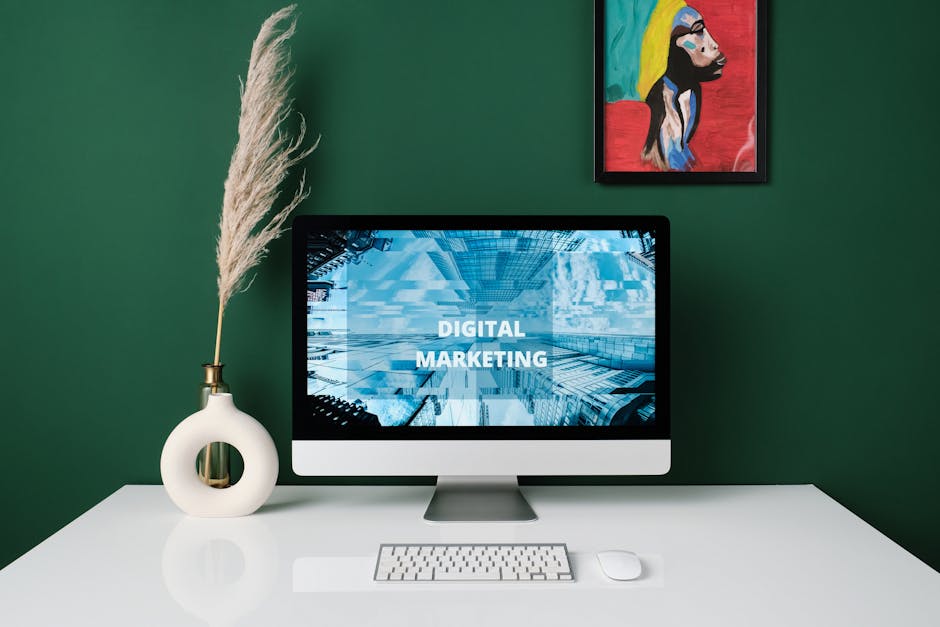Marketing
Maximizing ROI with AI-Driven Web Design Tools
Waveon Team
10/31/2025
0 min read
TABLE OF CONTENTS
Small and medium-sized businesses don’t have months or massive budgets to build, test, and optimize their websites. They need results—fast. AI-driven web design tools promise exactly that: shorter build cycles, smarter UX decisions, and measurable impact on revenue and lead generation. In this guide, you’ll learn how AI elevates web design from a cost center to a growth engine—and how to implement it effectively to maximize ROI.
Here’s a quick look at an AI builder in action—what your team sees when turning a brief into a live page.
This streamlined interface cuts build time dramatically, laying the groundwork for faster ROI.
Ready to experience it firsthand? Start building your first on-brand landing page with Waveon—no code, no waiting.
Introduction to AI-Driven Web Design
Defining AI-Driven Web Design
AI-driven web design refers to the use of artificial intelligence to plan, generate, optimize, and maintain websites and landing pages. Unlike traditional web design—where teams manually wireframe, code, write copy, and iterate via slow feedback loops—AI tools automate or accelerate many steps, including:
- Layout generation based on best-practice UX patterns
- Automated copywriting and localization
- Image selection, editing, and accessibility tagging
- SEO on-page recommendations
- Personalization of content blocks for different segments
- Real-time experimentation and conversion optimization
At its best, AI becomes an assistant to your marketing, design, and growth teams—freeing them from repetitive production tasks, while surfacing real-time insights to make sharper decisions.
Key Advantages Over Traditional Design
AI-driven web design tools offer business-level benefits that traditional methods struggle to match:
- Speed to market: Generate production-ready pages in hours or days, not weeks.
- Lower costs: Reduce agency spend and dev hours with no-code, AI-assisted workflows.
- Data-driven UX: Replace opinion-based design with AI-informed layouts and real-time testing.
- Scale and consistency: Roll out dozens or hundreds of pages while maintaining brand standards.
- Always-on optimization: AI continuously learns and improves copy, layout, and CTAs.
McKinsey’s research into generative AI highlights meaningful productivity gains across knowledge work, with time savings that can be redeployed toward higher-value tasks such as strategy and customer engagement. That shift alone moves design from a sunk cost to a performance lever.
Relevance for SMBs and Startups
For SMBs and startups, websites and landing pages are often the first and most frequent customer touchpoints. The ability to:
- Launch landing pages for campaigns in hours
- Personalize messaging for different audiences
- Run tests without developer bottlenecks
- Track and improve ROI week over week
can directly influence revenue and runway. AI-driven web design tools are tailor-made for lean teams that need enterprise-grade outcomes without enterprise overhead.
Understanding ROI in Web Design
Calculating ROI in Web Design
Return on investment (ROI) in web design is straightforward to calculate, but it requires discipline in tracking the right numbers.
- Basic formula: ROI = (Gain from Website − Cost of Website) ÷ Cost of Website
- Gain from Website: Typically tied to revenue from online sales, form completions that lead to deals, booked demos, or qualified leads multiplied by conversion to sale and average order value or LTV.
- Cost of Website: Includes tools, design and dev time, content creation, media assets, maintenance, and testing costs.
Example:
- A landing page generates 120 qualified leads per month.
- 15% of those leads convert into paying customers (18 customers).
- Average first-year revenue per customer is $600.
- Monthly revenue attributable to the page: 18 × $600 = $10,800.
- Monthly costs (tool + time): $1,800.
- ROI = ($10,800 − $1,800) ÷ $1,800 = 5 (500% monthly ROI).
AI-driven web design tools aim to increase the numerator (more conversions and revenue) while reducing the denominator (lower costs and time).
Visualizing ROI discussions helps teams align on goals and metrics while keeping attention on the outcomes that matter.
Ground decision-making in shared dashboards so everyone works from the same numbers and accountability is clear.
Common Financial Pitfalls
Even well-meaning teams leave ROI on the table due to:
- Overbuilding: Spending months and big budgets on features customers don’t need.
- Under-testing: Running sporadic A/B tests or none at all; slow learning cycles.
- Fragmented tooling: Using multiple disconnected apps that complicate data flow and attribution.
- Manual bottlenecks: Designers and developers tied up in repetitive production work.
- Poor measurement: Vague goals, unclear attribution, and mismatch between top-of-funnel metrics and revenue outcomes.
AI doesn’t fix strategy gaps—but it can shorten feedback loops, surface insights from real user behavior, and enforce best practices across your stack.
How AI Tools Improve ROI
- Faster creation reduces costs: Generative layout and copy tools shrink production time and agency dependency.
- Higher conversion rates: Personalization and continuous testing adapt content to each audience, increasing the likelihood of action.
- Better decision-making: AI models synthesize analytics, heatmaps, and session data to recommend high-impact changes.
- Scalable iteration: Make dozens of small, compounding gains across pages—building outsized ROI over time.
Evidence supports these levers:
- Companies that excel at personalization generate significantly more revenue from their activities than average players (McKinsey, Next in Personalization, 2021).
- Industry roundups show strong adoption of on-site personalization among ecommerce and digital teams, with reported impacts on conversion and AOV (Exploding Topics; Dynamic Yield’s compilation of personalization stats).
The bottom line: AI-driven web design tools align cost reduction with conversion growth—creating a flywheel for ROI.
AI Tools: Features That Drive ROI
Automation and Efficiency
Automation is the first ROI unlock. Key capabilities that save time and budget:
- AI page generation: Provide your value proposition and target audience; generate page sections, hero copy, feature lists, and CTAs aligned to best practices.
- Brand-aware design: Train the system on your brand guidelines—colors, typography, tone of voice—so every output is on-brand.
- Asset automation: Auto-crop, compress, and tag images; generate alt text to improve accessibility and SEO.
- Content localization: Produce multi-language versions with localized phrasing, currency, and cultural references.
- SEO scaffolding: Automated meta titles, descriptions, schema, and internal link suggestions.
Impact on teams:
- Marketers launch new pages without waiting for dev cycles.
- Designers focus on concept and brand rather than repetitive layout tasks.
- Founders can test new offers or positioning on live pages in hours.
These efficiencies improve ROI by compressing time-to-value and freeing budget for traffic acquisition or retention initiatives.
Here’s what that looks like from the creator’s seat—an AI builder composing sections, copy, and visuals that stay on-brand.
The faster you go from idea to iteration, the more cycles you can invest in testing and personalization.
Curious how this translates to your team’s workflow? Launch a pilot page in Waveon today and benchmark build time vs. your current process.
Real-Time Data and A/B Testing
Testing is the second major ROI engine. With AI:
- Hypotheses become easier: The tool proposes test ideas based on low-performing sections or audience behavior.
- Test velocity increases: Rapid generation of variants allows more tests per month.
- Smarter analysis: AI summarizes outcomes, estimates confidence, and suggests next steps.
Best practices:
- Start with high-impact elements: Headlines, hero sections, pricing tables, and forms.
- Prioritize tests with clear business goals: Lead volume, demo bookings, trial starts, or purchases.
- Avoid underpowered tests: Ensure enough traffic to detect meaningful differences; run tests to significance or use sequential methods responsibly.
- Compound small wins: An analysis of many A/B programs shows average lifts can be modest on a per-test basis, but compounding gains across multiple tests produce meaningful growth over time.
Traditional vs. AI-Assisted Testing: Quick Comparison
| Aspect | Traditional A/B testing workflow | AI-assisted testing workflow | ROI implication |
|---|---|---|---|
| Setup time per test | Days to weeks with designer/dev support | Hours with no-code variant generation | Faster learning cycles reduce opportunity cost |
| Variants per month (per marketer) | 2–4 | 8–15 | Higher test velocity compounds small lifts sooner |
| Hypothesis generation | Manual, ad hoc | Data-driven suggestions from analytics and heatmaps | Focus on high-impact ideas increases win rate |
| Statistical guardrails | Manual power calcs and QA | Built-in checks, alerts, and auto-halt rules | Fewer false positives and wasted spend |
| Analysis and reporting | Spreadsheet/GA exports | Automated summaries with next-step recs | Quicker decisions and continuous iteration |
| Cost per variant | Higher (design/dev hours) | Lower (no-code, reusable blocks) | More shots on goal for the same budget |
| Time-to-decision | 2–3 weeks | 3–7 days | Shorter payback period and faster ROI realization |
To deepen your understanding of A/B testing, this concise video walks through hypothesis framing, sample size, test duration, and interpreting results—plus common pitfalls to avoid so you don’t chase false positives.
Use these principles as you build your AI-assisted test backlog and prioritize high-impact variants across your top pages.Resource:
- Overview of outcomes from 100+ A/B tests highlights the importance of statistical power and realistic lift expectations (Analytics Toolkit analysis).
AI-driven web design tools earn ROI through continuous, evidence-based iteration rather than “big-bang” redesigns.
Side-by-side variant views help teams quickly see what’s changing and why a specific treatment might win.
Use clear readouts to decide whether to keep, iterate, or roll back—and feed learnings into your next test.
Ready to optimize faster? Spin up your first A/B test in Waveon and let AI suggest high-impact variants based on your analytics.
Personalization and Customer Experience
Personalization turns generic pages into relevant experiences, which increases conversion and lifetime value. AI expands personalization beyond rudimentary “first-name” tactics:
- Segment-based content: Tailor headlines, benefits, and imagery based on source, campaign, device, or firmographics.
- Behavioral triggers: Adjust CTAs based on scroll depth, time on page, or product interest.
- Predictive content blocks: Use engagement signals to show the most relevant testimonials, use cases, or pricing tiers.
- Geo and language variants: Dynamically adapt inventory, currency, or regional offerings.
Why it matters:
- McKinsey reports that brands that excel at personalization drive outsized revenue impact.
- Industry roundups show strong adoption of on-site personalization programs and self-reported conversion improvements.
Personalization works best when tied to clear business logic: “If the visitor arrives from a competitor keyword, emphasize differentiators and proof”; “If the visitor is from an enterprise IP, show security and compliance copy first.”
If you’re new to on-site personalization, this video explains how to segment audiences, choose impactful rules, and measure lift—from quick wins like source-based headlines to deeper firmographic targeting.
Map these tactics to the segments outlined above—source, behavior, and firmographics—to accelerate relevance and conversion lift.Implementing AI in Your Current Web Strategy
Assessing Current Web Strategies
Before you implement new tools, baseline your current state:
- Goals: What are your primary outcomes—leads, demos, trials, purchases, average order value?
- Funnel mapping: Which pages contribute most to those outcomes?
- Benchmarks: Current conversion rates by stage (landing → signup; checkout completion; demo request → show rate).
- Content audit: What assets perform well? Which pages have high bounce or low engagement?
- Tech stack: CMS, analytics, CRM, CDP, and ad platforms. Identify integration points.
- Resourcing: Who owns content, design, dev, analytics, and compliance?
Outputs:
- A prioritized list of pages to optimize (by impact × effort)
- A hypothesis backlog (top 10 ideas to test in the first 60 days)
- A measurement plan (events, goals, and dashboards)
Choosing the Right AI Tools
When selecting AI-driven web design tools, weigh:
- No-code speed: Can non-technical users ship pages and tests?
- AI quality: How good are the generated layouts and copy? Can you guide brand voice?
- Personalization depth: Can you target by source, behavior, and firmographics? Does it support dynamic blocks?
- Experimentation: Built-in A/B/n testing, guardrails for statistical validity, and clear reporting.
- SEO support: Structured data, meta suggestions, internal linking, and performance budgets (Core Web Vitals).
- Integrations: Analytics (GA4), ad platforms (Google, Meta, LinkedIn), CRM (HubSpot, Salesforce), CDPs.
- Governance: Roles, approvals, versioning, and audit trails.
- Performance: Fast hosting, global CDN, and image optimization.
AI Website Builder & Landing Page Generator platforms like Waveon are designed for SMBs and startups that need speed and measurable outcomes—helping teams launch, test, and personalize pages without writing code.
Questions to ask vendors:
- Show me a page built from scratch to publish in 30 minutes.
- How do you ensure brand consistency across AI-generated assets?
- What’s your approach to statistical confidence and test analysis?
- Can we connect to our CRM and pass UTM/source data into personalization rules?
- How do you handle privacy and consent for personalization?
Exploring options now? Book a 15-minute Waveon walkthrough to see how AI generation, testing, and personalization connect to your stack end-to-end.
Implementation Best Practices
- Start with a pilot: Choose one high-impact funnel (e.g., paid search landing pages) and run a 90-day AI-led program.
- Establish governance: Define who can publish, who approves, and what requires legal/compliance review.
- Set clear KPIs: For example, “Increase demo requests by 20% in 90 days,” or “Lift free trial conversion from 3.2% to 4.5%.”
- Build a test calendar: Plan 1–3 tests per week across headlines, hero sections, social proof, and forms.
- Personalization rollout: Start with 1–2 high-confidence segments (e.g., new vs. returning visitors; enterprise vs. SMB).
- Measure rigorously: Build a shared dashboard for conversions, revenue, and statistical lift. Review weekly.
- Iterate fast: Ship small changes, learn, keep what works, and queue the next test.
- Document learnings: Maintain a “what we believe now” playbook that codifies winning patterns.
Here’s how this looks in real life for a small business owner shipping pages on the go.
Mobile-friendly, on-the-go building shortens cycles between ideas, tests, and wins.
Case Studies: Success Stories with AI Web Design
Note: The case studies below are anonymized composites based on common SMB and startup scenarios to illustrate how AI-driven web design tools can affect ROI.
Small Business Success Story
Business: Local home services company
Goal: Increase inbound bookings without increasing ad spend
Starting point:
- 10K monthly visitors from local SEO and light paid search
- 2.1% booking conversion rate via contact form
- Site built in a generic CMS with limited testing capability
AI-driven strategy:
- Migrated key pages to an AI website builder for faster iteration.
- Generated new landing pages for top service categories with brand-appropriate copy and visuals.
- Ran A/B tests on hero headlines, service guarantees, and form placement.
- Personalization rules:
- New visitors: Show “first-time customer discount” banner.
- Returning visitors: Highlight “book again in 60 seconds” CTA.
- Mobile visitors: Sticky “Tap to Call” CTA with click-to-call tracking.
Outcomes over 90 days:
- Test velocity: 12 experiments across 4 pages
- Winning changes: Promise-led headline, trust badges above the fold, and condensed multi-step form
- Conversion rate gain: 2.1% → 3.4% (+61.9%)
- Net bookings: From ~210 to ~340 per month
- Cost: Tool subscription and ~20 hours of in-house work
- ROI: High—gains in bookings outpaced costs by a wide margin within the first month
Key lesson:
Consistent, small wins driven by AI-assisted testing and personalization compounded into big results on a modest traffic base.
Startup Growth with AI Tools
Business: B2B SaaS startup (seed stage)
Goal: Improve demo requests and reduce CAC while scaling paid campaigns
Starting point:
- 25K monthly visits from performance marketing
- Low landing page-to-demo conversion (~1.6%)
- Dependence on designers and developers for each page iteration
AI-driven strategy:
- Built a modular landing page system with AI-generated sections that matched brand guidelines.
- Personalization:
- Ad group-level variants: Tailored value props to the keyword intent.
- Firmographic rules using IP intelligence: Enterprise visitors saw security and compliance proof; SMBs saw quick-start benefits and pricing transparency.
- Testing roadmap:
- Hero variations: Value vs. pain-led headlines
- CTA contrasts: “Book a demo” vs. “See it in action (2 min)”
- Social proof: Case studies vs. G2 badges vs. logos
- Analytics:
- Unified UTM mapping to pass campaign and audience data to the CRM.
- AI summarized weekly test outcomes and suggested next iterations.
Outcomes over 120 days:
- Test velocity: ~20 experiments across 6 landing pages
- Conversion rate gain: 1.6% → 3.1% (+93.8%)
- Demo volume: Nearly doubled at similar spend
- CAC: Decreased as paid campaign efficiency improved
- Sales impact: Higher demo quality from enterprise-focused personalization
Key lesson:
Align AI-driven landing page personalization to ad intent and firmographics to dramatically improve paid efficiency and pipeline quality.
Lessons Learned and Takeaways
- Focus beats breadth: Optimize your top 3–5 pages first; that’s where most ROI lives.
- Speed compounds: More tests per month mean more opportunities for wins—AI boosts this.
- Personalization needs a thesis: Tie rules to segments you can identify and measure clearly.
- Data hygiene is critical: Clean UTMs, consistent event tracking, and CRM integration unlock insights.
- Governance protects the brand: AI can move fast—approval workflows keep quality high.
- Ship small, learn fast: Avoid analysis paralysis; let real user behavior guide you.
Future of AI in Web Design
Emerging Trends to Watch
- Generative design systems: Multi-model AI that co-generates layout, copy, images, and video from a single brief—while enforcing brand tokens automatically.
- Conversational site building: Natural language prompts drive entire site creation and updates (“Add a pricing comparison with three tiers and emphasize our free trial”).
- Multimodal optimization: AI learns from text, clickstreams, heatmaps, and session recordings to propose precise UX changes—not just copy changes.
- AI agents for growth: Autonomous agents coordinate landing page tests with ad platforms, shifting budget toward variants with rising conversion rates in near-real time.
- First-party data activation: Privacy-safe personalization using customer-consented data becomes a core differentiator as third-party cookies fade.
The Role of Machine Learning
- Predictive UX: Models predict user intent within the first few seconds and adjust the experience accordingly (e.g., simplifying navigation, highlighting an appropriate CTA).
- Adaptive content ranking: On-page modules reorder to surface the most relevant proof for each segment based on engagement history and cohort performance.
- Anomaly detection: Automated alerts flag issues like a sudden drop in conversions, broken forms, or outlier performance due to a test misconfiguration.
- LTV-aware optimization: ML closes the loop between front-end UX and downstream revenue, privileging tests that attract higher-LTV customers.
Long-term Business Impact
- Marketing agility becomes a moat: Teams that learn faster convert more traffic at lower cost.
- Design shifts from static to living systems: Websites become adaptive, data-connected product surfaces that update continuously.
- Resource leverage: Small teams punch above their weight with no-code AI workflows, reducing reliance on large agencies or dedicated dev teams.
- Financial alignment: With AI driving both cost efficiency and conversion growth, web design moves firmly into the “profit center” column.
Putting It All Together: A Practical 90-Day Plan
To operationalize your AI program, align the team around a visible plan everyone can reference.
Use this roadmap as the anchor for weekly check-ins so momentum never stalls.
Weeks 1–2: Baseline and setup
- Define goals, KPIs, and target segments.
- Audit your top 3–5 pages by traffic and revenue impact.
- Implement or migrate to an AI website builder with testing and personalization.
- Ensure analytics, CRM, and UTM hygiene are in place.
Weeks 3–6: Launch and learn
- Ship refreshed pages using AI-assisted generation for copy and layout.
- Start 1–2 high-impact A/B tests per page (headline, hero, CTA, social proof).
- Introduce 1–2 simple personalization rules tied to source or device.
- Review results weekly; queue next iterations.
Weeks 7–10: Scale testing and personalization
- Increase test velocity and broaden to forms, pricing sections, and navigation.
- Add firmographic or behavior-based personalization if applicable.
- Build a “Wins Playbook” to standardize what works across pages.
Weeks 11–13: Consolidate and forecast
- Compare conversion rates and revenue to pre-AI baseline.
- Project annualized ROI and make the business case to expand.
- Document governance, design tokens, and next-quarter roadmap.
How Waveon Can Help
Waveon is built to help SMBs, marketing teams, entrepreneurs, and startups ship high-performing websites and landing pages—without writing code. With AI-assisted page generation, built-in testing and personalization, and integrations across your stack, you can:
- Launch on-brand pages in hours
- Test faster and learn continuously
- Personalize experiences that convert
- Measure ROI with clarity
If you’re ready to turn your site into a growth engine, consider starting your next campaign on an AI website builder designed for speed and outcomes.
Conclusion
AI-driven web design turns websites from static brochures into adaptive growth engines. The ROI comes from four compounding levers:
- Automation and no-code speed that slash build time and cost
- Real-time experimentation that accelerates learning and lift
- Personalization that matches message to visitor intent and segment
- Clear measurement and integrations that keep decisions accountable
For SMBs and startups, the playbook is straightforward: baseline your funnel, choose an AI-first builder, run a focused 90-day pilot, and iterate weekly. Prioritize your highest-impact pages, maintain clean data, and compound small wins rather than chasing “big-bang” redesigns. As machine learning makes sites more predictive and first-party data fuels privacy-safe personalization, teams that move fastest will capture outsized gains.
Take the next step: launch one AI-generated page, run one A/B test, and add one simple personalization rule. Then build on what works—page by page, week by week—with Waveon as your no-code foundation for speed, testing, and measurable outcomes.
Sources and Further Reading
- The value of getting personalization right—or wrong—is multiplying (McKinsey, 2021): https://www.mckinsey.com/capabilities/growth-marketing-and-sales/our-insights/the-value-of-getting-personalization-right-or-wrong-is-multiplying
- Economic potential of generative AI (McKinsey, 2023): https://www.mckinsey.com/capabilities/tech-and-ai/our-insights/the-economic-potential-of-generative-ai-the-next-productivity-frontier
- Personalization statistics (Exploding Topics roundup): https://explodingtopics.com/blog/personalization-stats
- Dynamic Yield personalization statistics compilation: https://www.dynamicyield.com/article/50-most-important-dynamicyield-personalization-stats/
- Analysis of 115 A/B tests—average lift and statistical power (Analytics Toolkit): https://blog.analytics-toolkit.com/2018/analysis-of-115-a-b-tests-average-lift-statistical-power/












